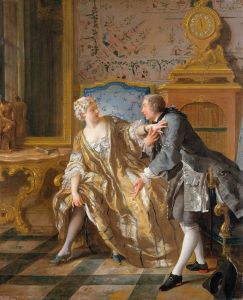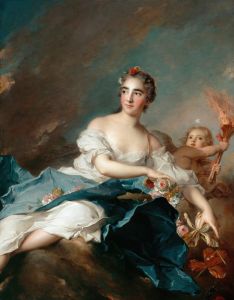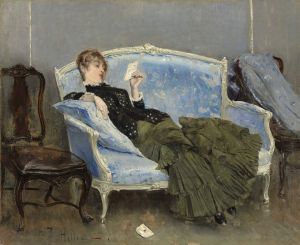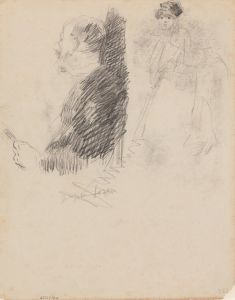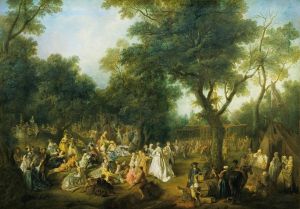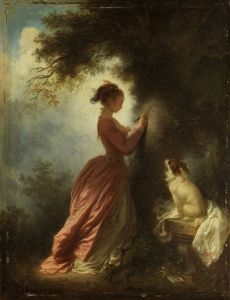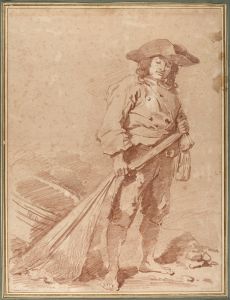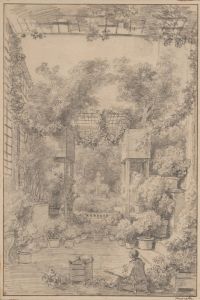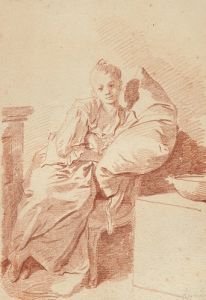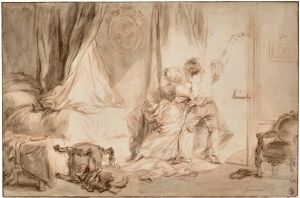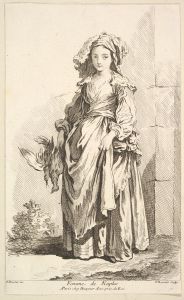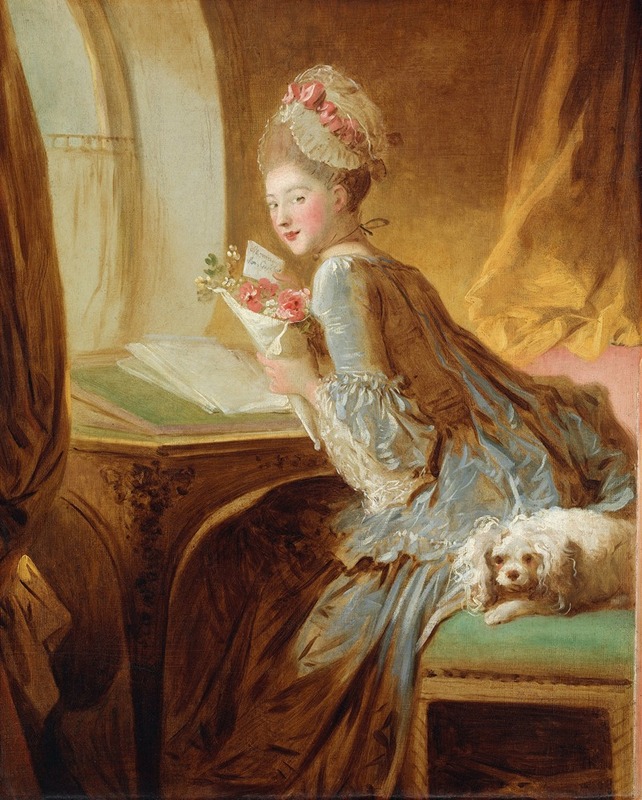
The Love Letter
A hand-painted replica of Jean-Honoré Fragonard’s masterpiece The Love Letter, meticulously crafted by professional artists to capture the true essence of the original. Each piece is created with museum-quality canvas and rare mineral pigments, carefully painted by experienced artists with delicate brushstrokes and rich, layered colors to perfectly recreate the texture of the original artwork. Unlike machine-printed reproductions, this hand-painted version brings the painting to life, infused with the artist’s emotions and skill in every stroke. Whether for personal collection or home decoration, it instantly elevates the artistic atmosphere of any space.
Jean-Honoré Fragonard's "The Love Letter" is a quintessential example of the Rococo style, characterized by its playful themes, light-heartedness, and ornate detail. Painted in the 1770s, this work is a testament to Fragonard's mastery in capturing the intimate and frivolous aspects of 18th-century French aristocratic life. Fragonard was a prominent French painter and printmaker whose works are celebrated for their exuberance and hedonistic qualities, often depicting scenes of romance and leisure.
"The Love Letter" portrays a young woman seated in an opulent interior, holding a letter close to her chest. Her expression is one of delight and contemplation, suggesting the letter's romantic nature. The setting is richly decorated, with luxurious fabrics, a hint of a landscape through a window, and a small dog at her feet, which was often a symbol of fidelity and companionship in art. The painting's composition and use of color are typical of Fragonard's style, with soft, pastel hues and dynamic brushwork that convey a sense of movement and emotion.
Fragonard's work is often associated with the Rococo movement, which emerged in early 18th-century France. This artistic style is known for its ornate and decorative qualities, often featuring themes of love, nature, and playful eroticism. "The Love Letter" exemplifies these characteristics, with its focus on a private, intimate moment and its lush, detailed background that enhances the romantic theme.
The painting reflects the social and cultural milieu of the time, where the French aristocracy indulged in leisurely pursuits and romantic escapades. Art during this period often served as a means of escapism, providing a glimpse into a world of beauty and pleasure. Fragonard's ability to capture these elements made him a favorite among patrons who desired artworks that celebrated the joys of life.
Fragonard was born in 1732 in Grasse, France, and trained under François Boucher, another leading Rococo artist. His career flourished during the reign of Louis XV, and he became known for his genre paintings, which often depicted scenes of love and domesticity. Despite the changing tastes brought about by the French Revolution, which favored more somber and moralistic art, Fragonard's works continued to be appreciated for their technical skill and charm.
"The Love Letter" remains an important piece within Fragonard's oeuvre and is housed in the Metropolitan Museum of Art in New York City. It continues to be admired for its delicate portrayal of a fleeting moment of affection, encapsulating the essence of Rococo art. The painting not only highlights Fragonard's artistic prowess but also offers insight into the cultural dynamics of 18th-century France, where art and life intertwined in a celebration of beauty and emotion.





